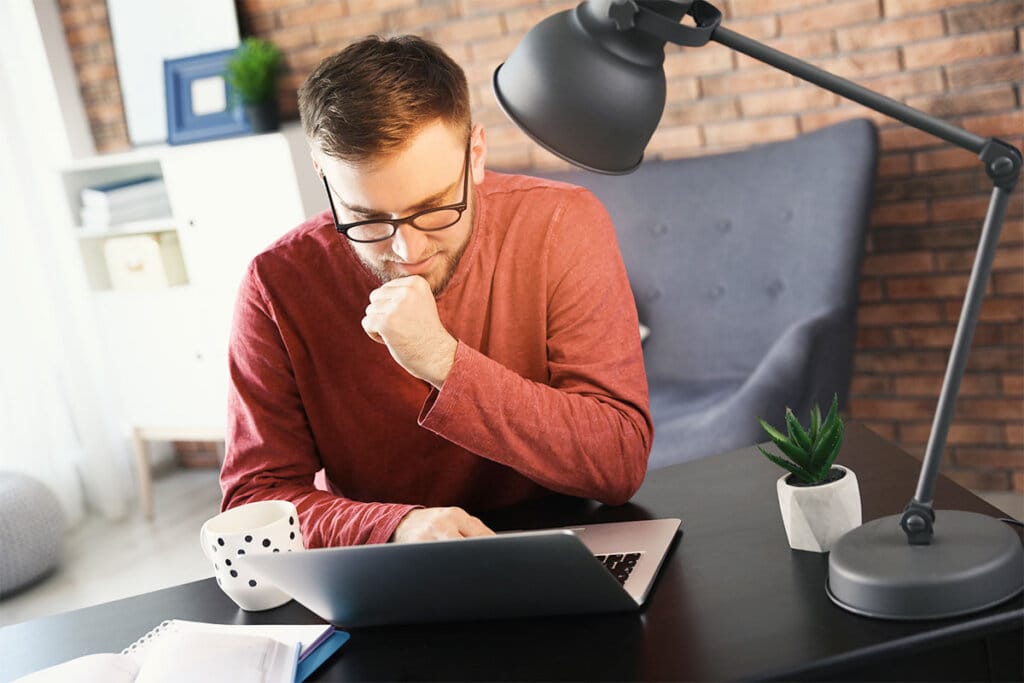As of 2018, there were over 56 million freelancers in the U.S. Now, due to the impact of the COVID-19 pandemic, more people have found themselves either working remotely for the first time, or trying out the gig economy as it continues to rise in popularity.
There are many benefits to freelancing from home.

[Freelancing] takes a lot of discipline to work from home and still be productive.
You can set your own hours, have more flexibility, and be your own boss.
But, it also takes a lot of discipline to work from home and still be productive.
One of the best ways to be successful when working as a freelancer is to have a designated space within your home that is strictly dedicated to your work.
If you want to create a viable freelance business plan, you’re going to need your own space that separates your work life from your home life.
Doing so will help to eliminate distractions and help you to maintain a healthy work-life balance.
So, what can you do to designate a space in your home for freelance work, no matter where you live?
Make the Right Upgrades
One of the best rules to follow when it comes to creating a home office space is to work with what you have.
You don’t need to have a giant house with multiple rooms in order to separate your workspace from everything else — an office can be anywhere from an unused corner to a large closet, as long as you’re willing to get creative and make some unique upgrades to your space.
Even if you live in a rental apartment or home, you can make proactive changes that won’t upset your landlord.
For example, think about the lighting of the space you’re choosing. Utilizing natural light as much as possible will help you to feel less stressed throughout the day so you can get more done.
If you don’t have a lot of natural light anywhere, you can switch out your light fixtures, or paint the room a brighter color.
Using the psychology of color, you can even paint your room to boost creativity and productivity.
If you’re not able to paint the walls because you’re renting your space, consider reusable wallpaper to bring some color to the room.
Or, add pops of color through accessories, like furniture, pillows, plants and decor.
Create a Distraction-Free Zone
 One of the potential issues of having a home office is that it can be very easy to get distracted.
One of the potential issues of having a home office is that it can be very easy to get distracted.
That’s why it’s so important to have a separate space away from all other household activities. But, even then, it’s not always easy to stay in “work mode.” One way you can keep yourself on task is to limit distractions as much as possible.
That starts with creating a clutter-free zone in your office space.
Regularly clean your space and get rid of piles of paper, coffee cups, or anything else on your desk or around you that makes things feel more chaotic than they need to.
Additionally, get your family/roommates on board with your work schedule.
When you are in your office space, they need to understand you’re working. While it’s important to take breaks throughout the day (and give yourself designated working hours), don’t fall into the temptation of spending time with your loved ones just because they are in the same house.
Finally, don’t become your own worst enemy when it comes to distractions. Some of the most common distractions in the average workplace include:
- Social media use
- Email consumption
- Multi-tasking
- Smartphone/device usage
So, while you may not have to deal with chatty co-workers while you’re home, you do have to discipline yourself to limit your time on social media and on your phone.
A good rule of thumb is to keep your devices out of sight when you’re trying to work, so you’re not tempted to look at them every few minutes, or whenever you receive a notification.
Focus On Productive Design
In order to be more productive in your home office, you should set it up in a way that is conducive to your work.
Your office should be a place in which you feel comfortable. While that doesn’t mean you should have a lounge chair or a couch for napping, it should be comfortable enough to be practical.
You don’t want to have to strain your neck to see your computer, or hunch over in your chair. You should be able to sit up straight, stretch your legs, and have enough room to stand up and walk around as needed.
Additionally, as a freelancer, it’s important to have the right tools and equipment in your at-home workspace.
That might include upgrading your computer to something that better fits your needs.
A new computer can be an investment, but it can also be a choice to be more energy-efficient while working at home. Switching to a laptop from a desktop computer, for example, can help you to use 80% less energy.
Finally, when it comes to productive design, don’t be afraid to let your personality shine.
It’s okay to create a gallery wall of pictures that inspire you, or to have photos of your family and friends on your desk. The more you feel like your workspace is truly yours, the happier you’ll be to work there every day.
That can result in higher productivity, less stress, and a more successful career as a freelancer.



Leave a Reply